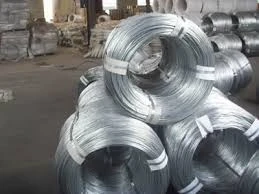nails for wood fencing
Nails for Wood Fencing Choosing the Right Fasteners
When it comes to building a wood fence, the choice of materials is crucial, and nails play a vital role in ensuring the longevity and stability of the structure. Selecting the appropriate type of nails for wood fencing can make a significant difference in the performance and durability of your fence. In this article, we will explore various types of nails suitable for wood fencing, their characteristics, and best practices for installation.
Types of Nails
1. Common Nails Common nails are the most widely used fasteners for wood fencing. These nails have a thick shank and a flat head, making them ideal for structural applications. They are designed to hold the fence boards together securely. However, their large heads can sometimes split thinner boards, so it's essential to choose the right size.
2. Galvanized Nails Wood fences are often exposed to the elements, making corrosion resistance a priority. Galvanized nails are coated with a layer of zinc, which protects them from rusting. These nails are particularly useful for outdoor applications, where moisture and humidity can lead to premature deterioration.
3. Ring Shank Nails For increased holding power, many builders opt for ring shank nails. These nails feature a series of small rings along the shaft, which grip the wood fibers and reduce the likelihood of the nail pulling out over time. While more expensive than common nails, their effectiveness in ensuring the stability of the fence makes them a worthy investment.
4. Screws While not technically nails, it's worth mentioning that screws can also be used for wood fencing. They provide superior holding power compared to nails and are less likely to loosen over time. However, screws can be more time-consuming to install, and they typically require pre-drilling to avoid splitting the wood.
nails for wood fencing

Best Practices for Installation
- Pre-drill Holes For hardwoods or when using larger nails, pre-drilling holes can help prevent splits and ensure a secure fit.
- Proper Spacing Space nails or screws correctly along the boards. A common rule of thumb is to place nails approximately 6 to 8 inches apart along the edges of the boards and 12 inches apart in the center.
- Angle Driving When installing nails, driving them at a slight angle can increase holding power. This technique helps to secure the fence boards more effectively.
- Consider Length The length of the nails should be sufficient to penetrate through the board and into the supporting posts or rails. A common length for nails used in wood fencing is 2.5 to 3 inches, depending on the thickness of the materials.
Conclusion
Choosing the right nails for wood fencing is essential for creating a durable and stable structure. Common nails, galvanized nails, and ring shank nails all have their places in fence construction. By considering the specific requirements of your fencing project and following best installation practices, you can ensure that your wood fence stands strong against the elements for years to come. Whether you're a DIY enthusiast or hiring a professional, understanding the importance of nail selection can lead to a successful fencing project.
-
Space-Saving Chain Fence Hacks Vertical Gardening with Cyclone MeshNewsJul.16,2025
-
Innovations in Iron Nail Wire Production for Modern ConstructionNewsJul.16,2025
-
Creative Uses of Wire Netting Fence in Modern Landscape DesignNewsJul.16,2025
-
Barbed Wire Fence Innovations in Anti-Climb TechnologyNewsJul.16,2025
-
Architectural Uses of Umbrella Nails for Aesthetic Roof DesignsNewsJul.16,2025
-
Architectural Uses of Razor Barbed Wire in Secure Urban DesignNewsJul.16,2025




